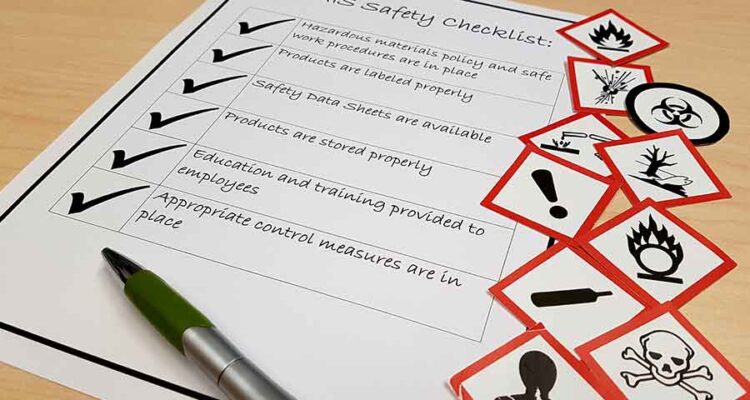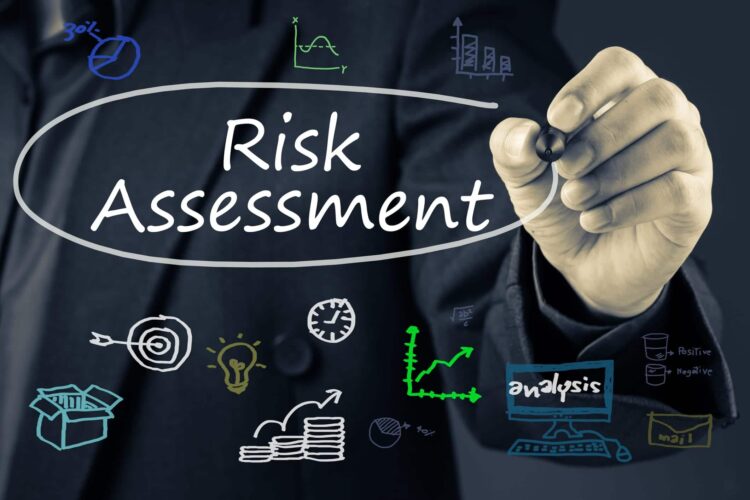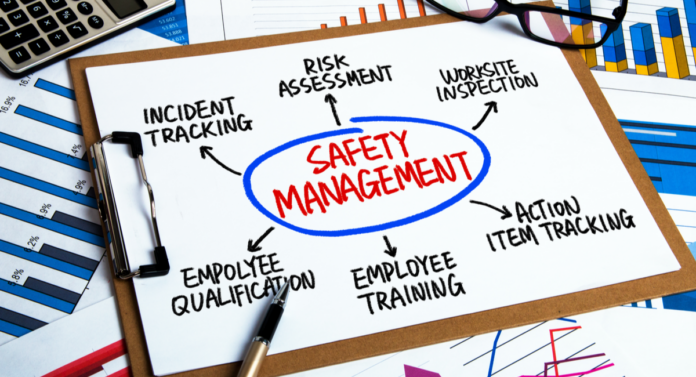In the workplace, accidents can happen in a flash. Are you taking proactive steps to protect your staff from harm?
Here are 6 strategies to help you prevent workplace accidents and ensure a safe work environment. You’ll gain peace of mind and create an atmosphere of safety for everyone.
Identifying Potential Hazards

In order to reduce the frequency of workplace accidents and promote safety in the workplace, it is important to identify potential risks and hazards. Potential hazards can range from slips, trips and falls to chemical spills, hazardous materials, fire hazards and many others. Employers should take a proactive approach to identify potential risks before they lead to incidents or accidents. One way to improve safety procedures and ensure that workers are properly trained is to implement an enterprise learning management system. This system can provide employees with access to training materials and safety guidelines, allowing them to stay up-to-date on potential hazards and safety procedures.
A risk assessment should be conducted regularly and a report produced which systematically identifies all potential hazards. Factors should include building layout, equipment design/construction, chemical use/storage, machinery operation/maintenance and work processes. This will help employers determine areas where safety procedures might be inadequate or noncompliance with legislation could occur. At the same time, workers can help identify potential hazards by volunteering their knowledge of working experiences during meetings or one-on-one conversations with management.
Training and Education
Training and education are essential considerations in any safety management plan. All personnel involved in areas of risk or activities related to potential hazards must receive appropriate training and demonstrations to highlight potential dangers and preventive measures that can eliminate or reduce risk. Training methods should be tailored to the particular needs of the organization; individuals, work crews, or larger teams may require different approaches. Common key elements for any training program include:
- Identifying all possible hazardous conditions and safety related problems
- Developing strategies for minimizing risks associated with those hazards
- Ensuring proper use of protective equipment and other safety items
- Adopting safe working practices for hazardous activities and situations
- Integrating occupational health programs into operational procedures
- Providing proper instruction on operating procedures for various work activities
- Holding regular refresher courses on workplace safety
- Conducting periodic evaluations of each employee’s knowledge, skill level, attitude toward safe work practices, etc.
Training is especially important when new processes, materials, equipment or technologies are proposed. A comprehensive program should cover not only how to “do it safely” but also what to do if an incident occurs. In addition to specific instructions related to job tasks, training should also emphasize the importance of the individual’s commitment — both at home and at work — towards safety as a shared responsibility within their workplace community.
Risk Assessment Strategies

Risk assessment is a critical component of workplace safety, as it allows organizations to identify potential hazards in order to prevent accidents before they occur. Properly assessing risks and implementing corresponding measures can help reduce the number of injuries, illnesses and fatalities in the workplace. Here are six key strategies for proactive risk assessment:
- Conduct an initial hazard assessment of the workplace – Before employees begin working on any job, supervisors should take a walk-through to identify any equipment or working conditions that may be potentially hazardous.
- Regularly review OSHA safety standards – OSHA provides safety guidelines for various industries and employers must regularly review these standards to ensure their workplace stays compliant with all regulations.
- Educate employees on risk assessment techniques – Employees should be trained in methods of identifying potential risks so they can alert supervisors if they notice anything dangerous or out of compliance with safety regulations.
- Develop comprehensive policies and procedures – Employers should create detailed policies and procedures regarding expected behaviors regarding both employees and employers when it comes to minimizing risk in the workplace. This includes clear definitions, contact information for violations and a timeline for reporting any incidents that occur on worksites or jobsites.
- Utilize management software solutions – The use of management software solutions can help simplify processes like scheduling training sessions, monitoring hazards over time, documenting compliance issues, tracking incident reports and more–allowing employers to stay on top of their organization’s safety levels without added effort from staff members.
- Investigate every accident or near-miss – It is important for employers to pay attention even when serious injury or fatalities are not involved by thoroughly investigating every incident that occurs no matter how small or insignificant it appears on the surface–this will better enable employers to uncover any systemic problems beneath the surface that might have caused those incidents which can then be properly addressed before another similar incident happens again in future.
Reporting and Documentation

Conscientious reporting and documentation are key components of effective safety management. Each incident — regardless of degree of injury, severity or type— should be reported and thoroughly documented in order to effectively prevent workplace accidents in the future. To accurately record any incidents, you could consider the option to implement a digital safety management system within your workplace. In many cases, elements of the incident may become relevant after some time has passed, or lessons learned may be applicable to similar incidents.
Thorough and accurate documentation should include information such as: description and analysis of the incident; details about time, location, individual(s) involved; summary of investigation; corrective actions taken; photographs or diagrams; reports on follow-ups with employees regarding incident outcomes.
Conclusion
It’s critical for employers to understand the importance of workplace safety and actively work to prevent accidents. Professional health and safety training is a major component of successful workplace safety management, but it is only part of the equation. Other strategies such as job hazard analysis, employee feedback, and safety inspections are also important steps and should be included in any comprehensive safety management program.
Above all, employers should strive to create an atmosphere where workers feel safe and confident in their ability to complete tasks without risking their health or wellbeing. By investing in workplace safety from the start, employers can save money on lost productivity due to illness or injury and maintain a healthy, prosperous workforce.







